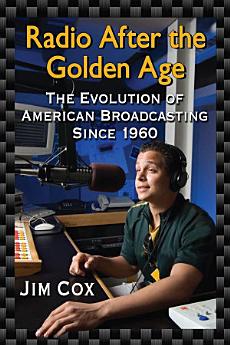Radio After the Golden Age: The Evolution of American Broadcasting Since 1960
Sep 2013 · McFarland
5.0star
2 reviewsreport
Ebook
264
Pages
family_home
Eligible
info
reportRatings and reviews aren’t verified Learn More
About this ebook
What became of radio after its Golden Age ended about 1960? Not long ago Arbitron found that almost 93 percent of Americans age 12 and older are regular radio listeners, a higher percentage than those turning to television, magazines, newspapers, or the Internet. But the sounds they hear now barely resemble those of radio's heyday when it had little competition as a mass entertainment and information source.
Much has transpired in the past fifty-plus years: a proliferation of disc jockeys, narrowcasting, the FM band, satellites, automation, talk, ethnicity, media empires, Internet streaming and gadgets galore... Deregulation, payola, HD radio, pirate radio, the fall of transcontinental networks, the rise of local stations, conglomerate ownership, and radio's future landscape are examined in detail. Radio has lost a bit of influence yet it continues to inspire stunning innovations.
Ratings and reviews
5.0
2 reviews
About the author
Jim Cox, a leading radio historian, is an award-winning author of numerous books on the subject. A retired college professor, he lives in Louisville, Kentucky.
Rate this ebook
Tell us what you think.
Reading information
Smartphones and tablets
Install the Google Play Books app for Android and iPad/iPhone. It syncs automatically with your account and allows you to read online or offline wherever you are.
Laptops and computers
You can listen to audiobooks purchased on Google Play using your computer's web browser.
eReaders and other devices
To read on e-ink devices like Kobo eReaders, you'll need to download a file and transfer it to your device. Follow the detailed Help Center instructions to transfer the files to supported eReaders.







